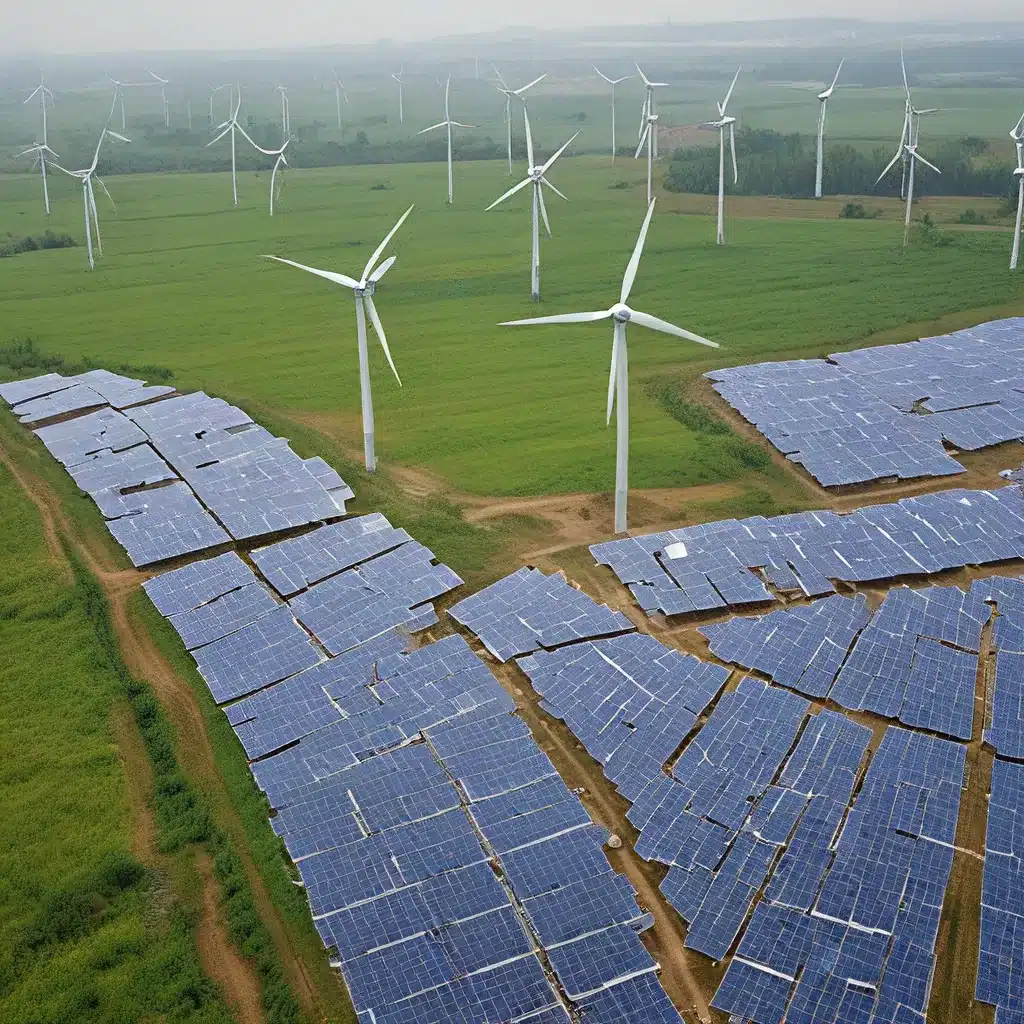
As the world grapples with the pressing challenges of climate change and energy security, I’ve been closely following the remarkable progress unfolding in Nigeria. The recent reforms spearheaded by the new administration and central bank governor have set the stage for a renewable energy revolution that could have far-reaching implications, not just for Nigeria, but for the entire African continent.
Restoring Macroeconomic Stability and Market Confidence
When Governor Olayemi Cardoso took the helm of Nigeria’s central bank just six months ago, the country was facing a daunting set of challenges. The national currency, the naira, was under immense depreciation pressure, and inflation was soaring. But Cardoso and his team wasted no time in embarking on an ambitious reform agenda to restore macroeconomic stability and regain the trust of both domestic and international investors.
At the heart of their strategy was a commitment to well-sequenced policy reforms and open, transparent dialogue with all stakeholders. The central bank has pledged to return to orthodox monetary policy, phasing out the unsustainable FX interventions that were previously used to prop up the naira. Instead, they will focus on managing exchange rate volatility while allowing market forces to play a greater role.
“Whatever policies you make, if they don’t impact the man on the street, then you haven’t done anything,” Cardoso remarked, underscoring the importance of translating these complex economic maneuvers into tangible improvements in the lives of everyday Nigerians.
And it seems to be working. The local currency has performed much better in recent months, and the open communication from the central bank has helped build public confidence in the exchange rate. As Cardoso observed, “It is clear to me that trust is so critical in successfully anchoring a major task.”
Fuel Subsidy Reforms and Exchange Rate Unification
But the central bank’s efforts are just one part of a broader reform agenda being spearheaded by the new administration under President Tinubu. One of the administration’s key priorities has been to tackle the longstanding issue of fuel subsidies, which have historically drained government coffers and distorted the energy market.
By reforming the fuel subsidy regime and unifying the multiple official foreign exchange windows, the government is aiming to create a more coherent and transparent economic environment. This, in turn, is expected to unlock significant resources that can be redirected towards investments in renewable energy infrastructure and sustainable development.
As the IMF’s African Department Director, Abebe Aemro Selassie, noted, “The recent spikes in the cost of fuel and food—and the resulting risks of social unrest—underline the importance of investing in green energy and boosting resilience to shocks.”
Mobilizing Private Climate Finance
And this is where the real opportunity lies. With the macroeconomic foundations being put in place, Nigeria is now poised to attract a wave of private investment in renewable energy projects. But as the IMF’s recent analysis has shown, this is easier said than done.
Investors often face a daunting array of obstacles when it comes to financing climate projects in emerging markets and developing economies. High upfront costs, technical challenges, long time horizons, and perceived political risks can all serve as deterrents. In Nigeria’s case, the market’s expectation for the cost of equity for climate investments is in the 12-15% range, which is far above what many commercial investors would find acceptable.
This is where the public sector must play a crucial role in catalyzing private climate finance. By strategically deploying instruments like equity investments, credit enhancements, and public-private partnerships, governments and multilateral institutions can help de-risk these projects and attract a broader pool of private capital.
As the IMF has emphasized, “Blending public and private sector finance is useful to de-risk these investments for private sector capital in general through, for example, first loss investments or performance guarantees.”
Strengthening the Climate Finance Architecture
But mobilizing private finance is only one piece of the puzzle. Cardoso and his team at the central bank are also spearheading efforts to build a robust climate information architecture that can support better decision-making and risk pricing.
This includes initiatives to improve the availability, reliability, and comparability of climate data and statistics, as well as the development of globally harmonized disclosure standards and taxonomies. By providing greater transparency and clarity, these measures can help investors make more informed choices and prevent greenwashing.
The central bank is also working closely with the IMF and other international organizations to close critical climate finance data gaps. As Selassie noted, “Governments, central banks, financial supervisors, and multilateral institutions must coordinate and develop a comprehensive strategy to attract more private capital.”
A Renewable Energy Transformation on the Horizon
While the challenges ahead are undoubtedly daunting, the reforms unfolding in Nigeria have the potential to catalyze a transformative shift towards renewable energy. By restoring macroeconomic stability, eliminating distortive fuel subsidies, and mobilizing private finance, the government and central bank are laying the groundwork for a more sustainable and resilient energy future.
And as Nigeria sets the pace, I can’t help but wonder how the ripple effects could reverberate across the African continent. After all, as Cardoso himself said, “Whatever policies you make, if they don’t impact the man on the street, then you haven’t done anything.”
So, I’ll be keeping a close eye on the developments in Nigeria, and I encourage you to do the same. Who knows, this might just be the beginning of a renewable energy revolution that could change the face of Africa for generations to come.

